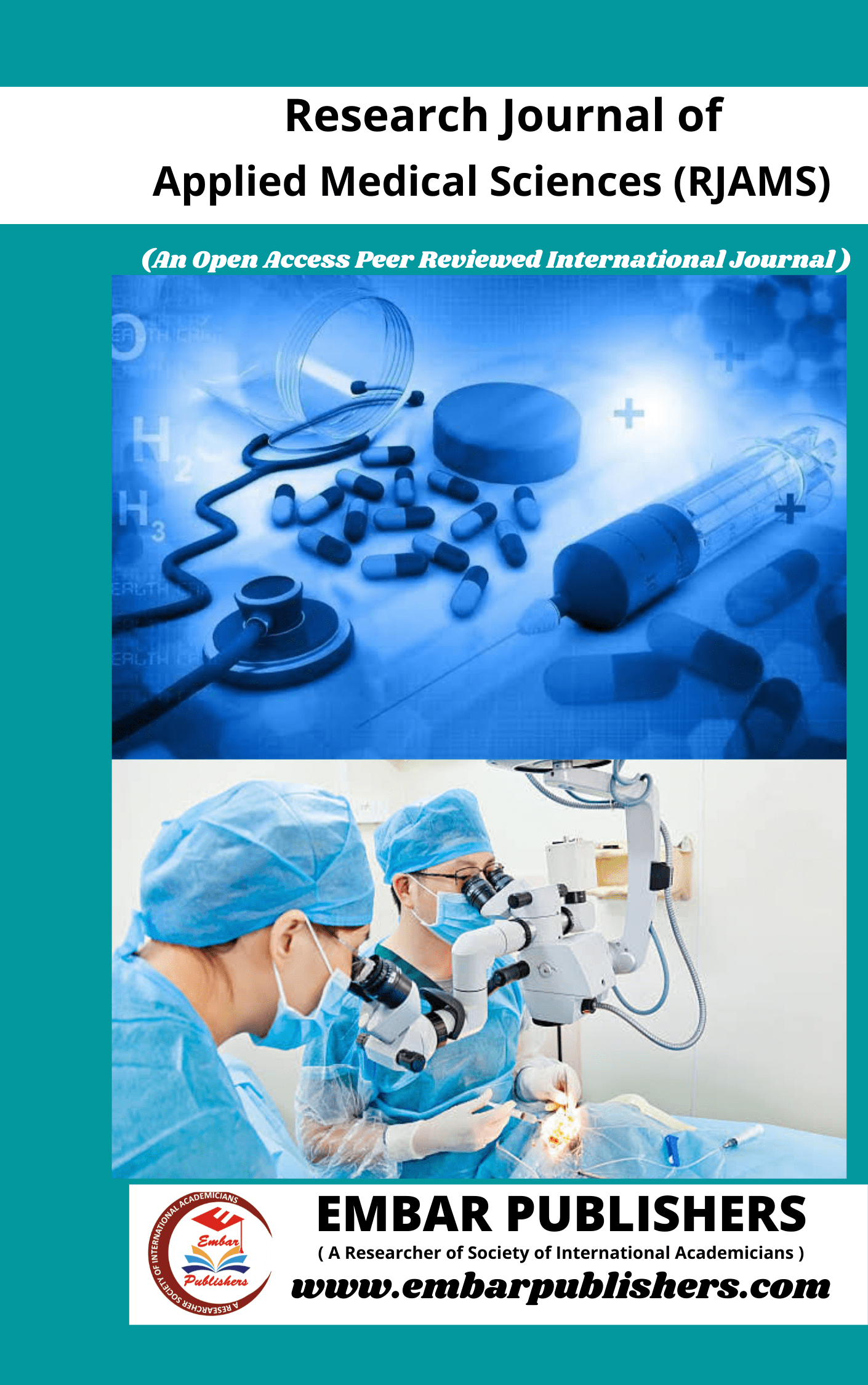
Salivary Diagnostics in Oral Potentially Malignant Disorders: Advances and Clinical Relevance
Dr Ashwini Dhopte, Dr Hiroj Bagde
1 Associate Professor, Department of Oral Medicine and radiology, Chhattisgarh Dental College and research institute, Chhattisgarh , 2 Professor and Head, Department of Periodontology,Chhattisgarh Dental College and research institute, Chhattisgarh
DOI: doi.org/10.58924/rjams.v4.iss5.p1
Published Date: 10-Sep, 2025
Keywords: oral potentially malignant disorders, salivary diagnostics, biomarkers, early detection, oral cancer, liquid biopsy, point-of-care testing
Abstract:
Oral potentially malignant disorders (OPMDs) represent a heterogeneous group of lesions with an increased risk of malignant transformation to oral squamous cell carcinoma (OSCC), accounting for significant global morbidity and mortality. Current diagnostic approaches rely heavily on clinical examination and histopathological assessment, which possess inherent limitations in early detection and risk stratification. This narrative review synthesizes current evidence on salivary diagnostics for OPMDs, evaluating recent advances and clinical relevance. We conducted a comprehensive literature search of PubMed and Scopus databases, focusing on studies published within the last decade that investigated salivary biomarkers and diagnostic technologies for OPMDs. The review identifies several categories of promising salivary biomarkers, including genetic alterations, transcriptomic signatures, proteomic profiles, and microbiome shifts. Additionally, we explore emerging analytical technologies such as next-generation sequencing, mass spectrometry, and point-of-care devices that have enhanced biomarker discovery and clinical application. The evidence suggests that salivary diagnostics offer considerable promise for non-invasive early detection, risk stratification, and monitoring of OPMDs. Multi-marker approaches demonstrate superior diagnostic accuracy compared to single biomarkers, reflecting the complex molecular pathogenesis of oral carcinogenesis. However, challenges remain regarding standardization, validation, and clinical implementation. The integration of salivary biomarkers with conventional diagnostic methods may enable personalized surveillance strategies and facilitate early intervention, potentially reducing the burden of OSCC.
References:

Journal: Research Journal of Applied Medical Sciences
ISSN(Online): 2945-4131
Publisher: Embar Publishers
Frequency: Bi-Monthly
Chief Editor: Dr H. Gayathri
Language: English
ISSN(Online): 2945-4131
Publisher: Embar Publishers
Frequency: Bi-Monthly
Chief Editor: Dr H. Gayathri
Language: English
